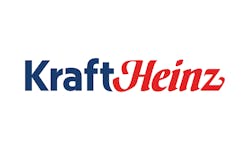Kraft Heinz Reports Second Quarter 2016 Results
PITTSBURGH & CHICAGO--(BUSINESS WIRE)--The Kraft Heinz Company reported second quarter 2016 financial results that reflected significant gains from the ongoing integration of Kraft and Heinz, partially offset by currency translation and a higher tax rate versus the prior year period.
“By implementing our integration program and improving our performance in the marketplace, we continued to drive results in the second quarter,” said Kraft Heinz CEO Bernardo Hees. “However, to sustain our momentum, we must remain focused on profitable growth, innovations to meet consumer needs in a challenging environment, and improving our operations. We're off to a good start, but there is still much work to be done.”
Q2 2016 Financial Summary
Net sales were $6.8 billion, down 4.7 percent versus pro forma net sales for the year-ago period, due to a negative 4.0 percentage point impact from currency and a negative 0.2 percentage point impact from divestitures. Organic Net Sales decreased 0.5 percent versus the year-ago period. Pricing increased 1.6 percentage points driven by the United States, Rest of World and Canada, despite deflation in key commodities in the United States and Canada(3), primarily in dairy and coffee. Volume/mix decreased 2.1 percentage points primarily due to lower shipments in several categories, particularly meats and foodservice in the United States, that was partially offset by growth from innovation in Lunchables and P3 in the United States as well as gains in condiments and sauces globally.
Adjusted EBITDA increased 17.7 percent versus the year-ago period to $2.1 billion, despite a negative 5.4 percentage point impact from currency, driven by gains from cost savings initiatives(4) and favorable pricing net of key commodity costs. Adjusted EPS increased 39.3 percent versus the year-ago period to $0.85, mainly reflecting growth in Adjusted EBITDA that was partially offset by a higher tax rate versus the prior year period.
Q2 2016 Business Segment Highlights
United States
United States net sales were $4.7 billion, down 1.9 percent versus pro forma net sales for the year-ago period. Pricing increased 1.2 percentage points despite deflation in key commodities, primarily in dairy and coffee. Volume/mix decreased 3.1 percentage points, primarily driven by gains from innovation in Lunchables and P3 as well as macaroni & cheese that were more than offset by lower shipments versus the prior year, particularly in foodservice, bacon and cold cuts.
United States Segment Adjusted EBITDA increased 25.7 percent versus the year-ago period to $1.5 billion. Gains from cost savings initiatives and favorable pricing net of key commodity costs were partially offset by volume/mix declines in meats and foodservice. Full report.
